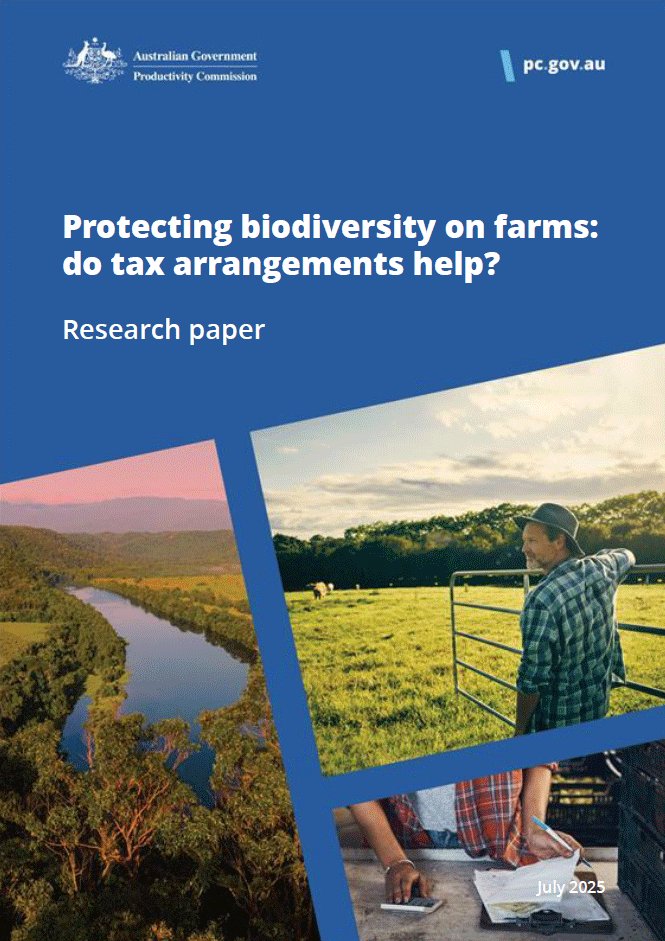Protecting biodiversity on farms: do tax arrangements help?

Research paper
Released 15 / 07 / 2025
To meet our ‘30% by 2030’ commitment under the Kunming–Montreal Global Biodiversity Framework, Australia must protect or conserve nature on an additional 60 million hectares of land over the next five years.
Much of this will have to take place on privately held land. Tax concessions as an incentive for farmers and landholders who adopt conservation covenants have been around for many years. But since 2014, the ATO has approved only 18 income tax deductions for landholders who had entered into conservation covenants.
This research paper examines how these tax arrangements might, or might not, influence farmers' decisions to enter conservation covenants. We show how the complexity and uncertain benefits of this incentive are likely limiting its uptake.

- In 2022, the Australian Government committed to the Kunming–Montreal Global Biodiversity Framework. This requires that at least 30% of land is covered by ecologically representative and well-connected systems of protected areas and other area-based conservation measures by 2030. To meet this target, Australia must protect or conserve an additional 60 million hectares of land over the next five years. Much of this increase will need to come from privately held land. Conservation covenants are a key mechanism for permanently protecting biodiversity on private land.
- Tax concessions for farmers who enter into conservation covenants, of which income tax deductions are the most significant, have been in place for many years. In theory, they provide an incentive by offsetting the loss of market value and reduced production opportunities to a property from a covenant and should support progress towards the target. In practice, tax arrangements for farm activity are complex, and the value of income tax deductions to a farmer contemplating a covenant is uncertain. For many farmers, the tax arrangements likely mean that they would face an increased tax liability in addition to a financial loss from placing a conservation covenant on part of their land.
- Since 2014, the Australian Tax Office has approved only 18 income tax deductions for landholders who had entered into conservation covenants. Over the 10 years to 2022, new conservation covenants numbered 2,690 (although the proportion of these taken up by primary producers is unknown).
- Income tax deductions appear to have little positive incentive effect on decisions to enter into conservation covenants, are likely to be inefficient and should not be relied on as a policy tool for increasing conservation on private land to meet the 2030 target.
- There would be value in governments investing in a better understanding of how incentives to conserve biodiversity on private land could be improved. Policymakers could then refine these programs to increase their uptake, ensuring they can make a meaningful contribution to Australia’s biodiversity commitments.
- Preliminaries: Cover, Copyright and publication detail, Contents, and Acknowledgments
- Key points
- 1 Introduction
- 2 Influences on farmers’ decisions to protect biodiversity
- 3 Tax arrangements relevant to farmers
- 4 A hypothetical example – a mixed sheep and cropping farm in north central Victoria
- 5 Current tax settings raise concerns
- 6 Incentives for protection of biodiversity on private land need to change if we are to meet the 30 by 30 target
- Appendix A Literature review of tax reforms for incentivising private land conservation
- References

